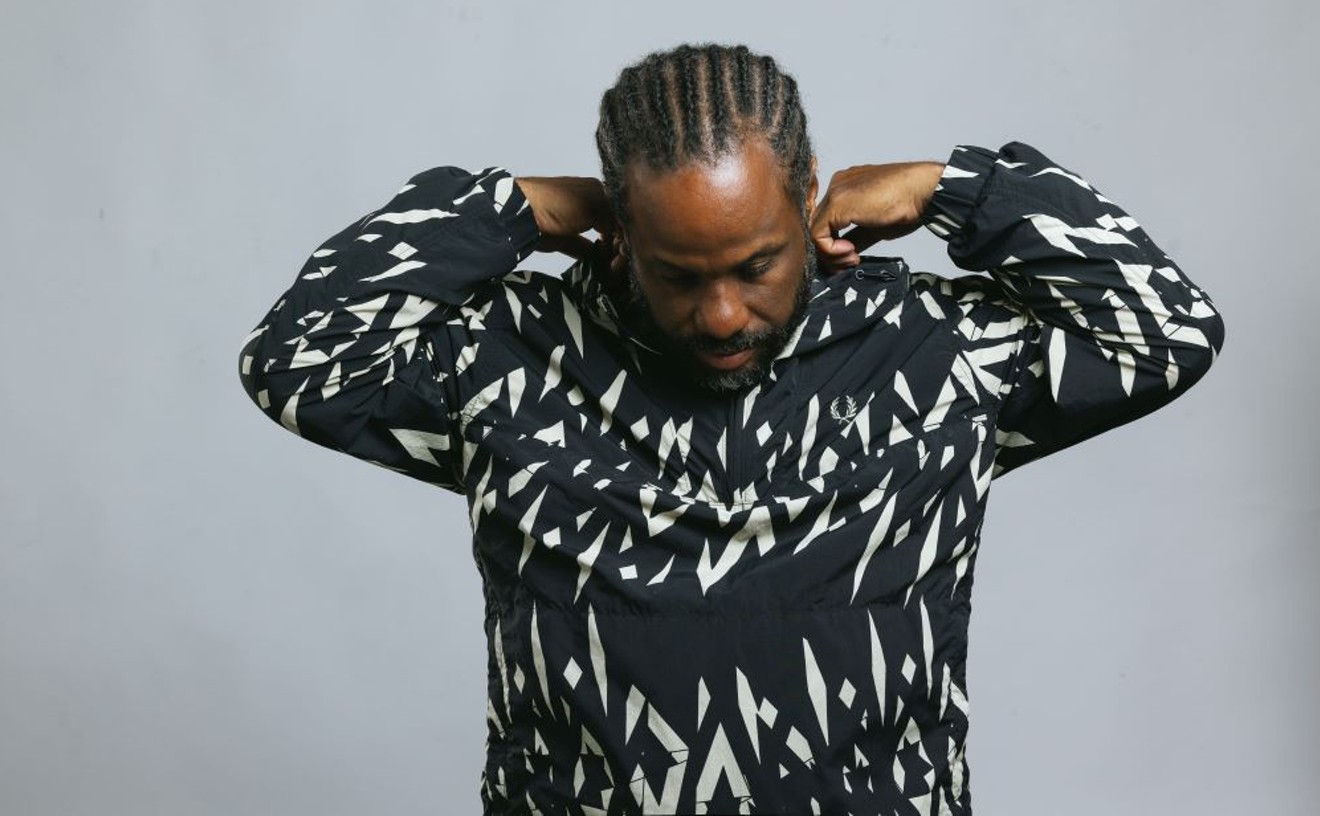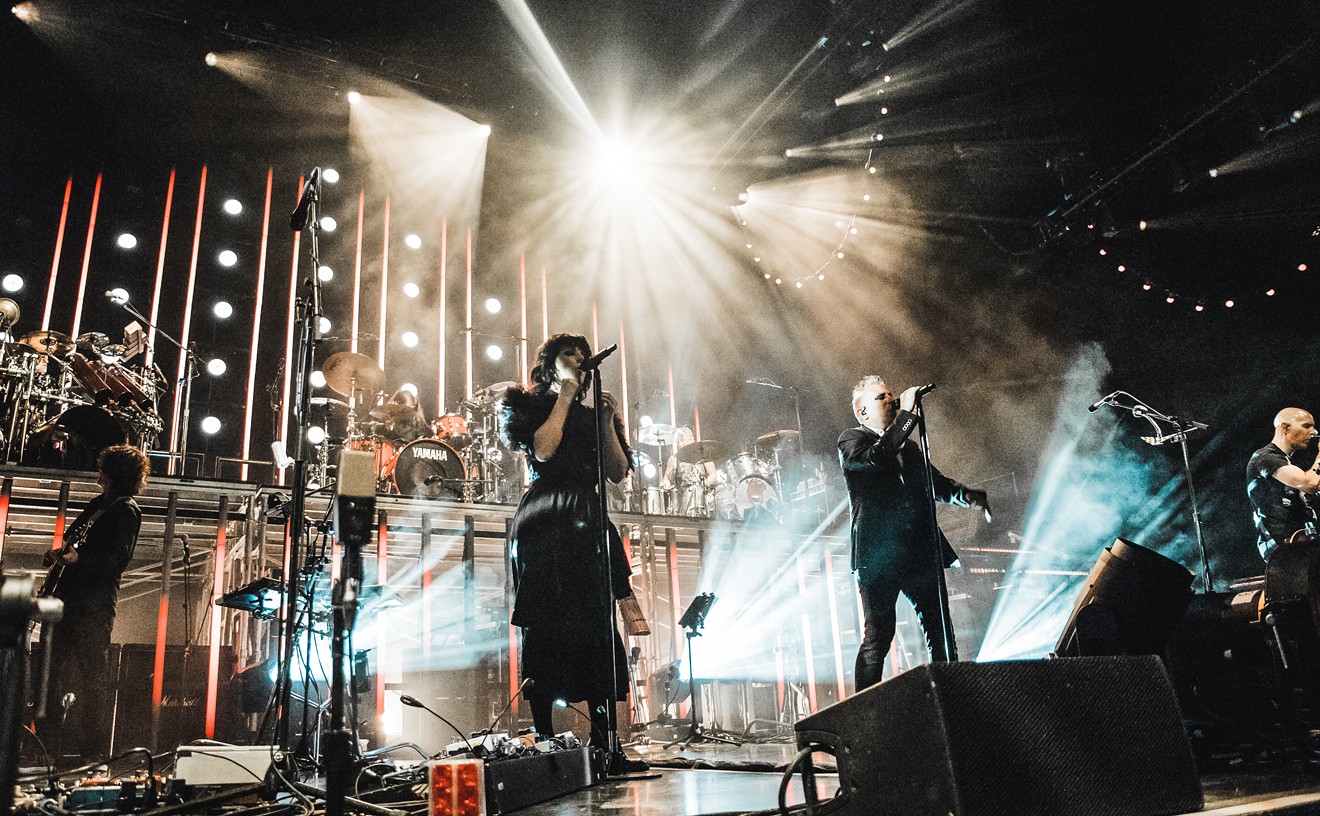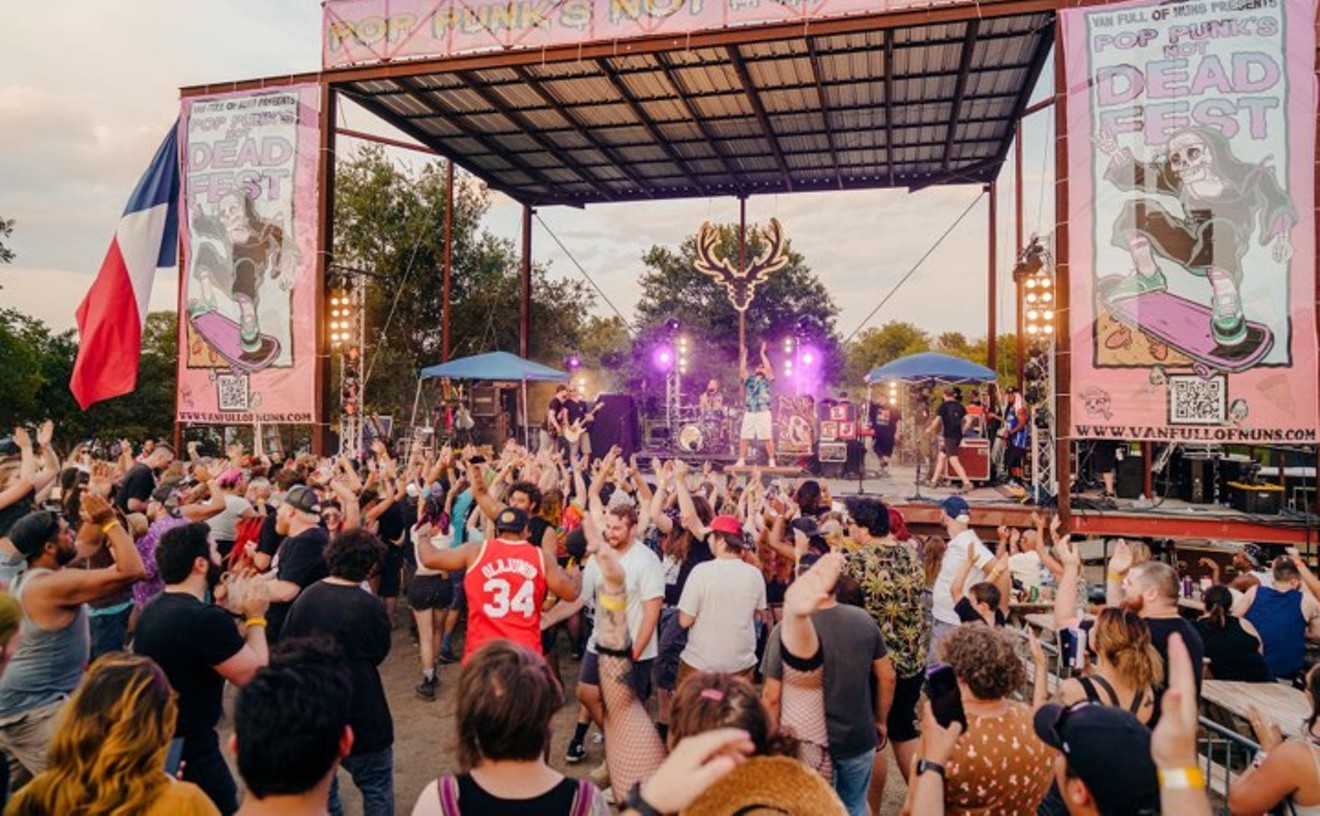At some point, the people milling around onstage--scruffy in their T-shirts and beards and dreadlocks, adjusting amplifiers and connecting cables--became musicians tuning up their instruments. And at some point after that, the musicians tuning up their instruments became a band starting its set. But each individual phase came and went quietly and without warning or reminder, each subtle change virtually indistinguishable from the ones before it and after it, drops of water flowing into a stream flowing into an ocean.
All of a sudden, though, there it is--this sound, this music, this whatever it is. It's right in front of you and behind you and on top of you, running from the back of the room on stocking feet until it's in your face and you don't have a clue as to how it got there and what it wants from you. From that moment on, Sub Oslo has the floor, and the ceiling, and the walls. The random noises circulating around the audience have been replaced by the seemingly random noises emerging from the stage. But now that you're paying attention, watching them watching one another, it's clear that none of this is random. It's just Sub Oslo, doing what it does best.
Which is dub music--at least, that's what it is if you have to put a name on it. In truth, the sound the band makes in concert (and on its first full-length album, Dubs in the Key of Life, released this week on Two Ohm Hop Records) is indescribable. That isn't a cop-out: You try figuring out what to call music that involves everything from guitars, bass, and drums to clavinets and barking dogs and bleeps and blips of found sounds. The most accurate description of Sub Oslo's music appeared on the label of an advance CD-R copy of the new disc, before a title had been settled: Sixty-Six Minutes of Freedom.
"We kind of just go and see what happens," says Sub Oslo bassist Miguel Veliz, just home from his job as a screen printer. (Veliz's handiwork appears on the covers of Dubs in the Key of Life and Sub Oslo's debut 12-inch EP.) "We've never been able to have a set list or anything like that. You know, a lot of those songs that are on the record didn't even have titles until we had to do the art and the text for the CD. And a lot of times, some of those songs ended up working their way into other songs that they blended into really well, 'cause while we're playing, someone will just kind of go into it, and we'll follow them. We just feed off each other."
For its part, the members of Sub Oslo--Veliz, Moses Mayo (percussion), Quincy Holloway (drums), Alan Uribe (clavinet, Moog, piano), John Nuckels (live dub mix, recording engineer), Frank Cervantez (guitar), Brandon Uribe (flute, percussion), Ben Viguerie (piano and synths), Paul Baker (live visuals)--have never thought too much about what it is they do. Which is probably why it works so well: If the members of Sub Oslo tried to plan everything beforehand, rehearse until the set is bulletproof, it would have fallen apart a long time ago.
Of course, there isn't much danger in that happening. Whether they're in a rehearsal room, on a stage, or in a studio, they just plug in and go for it--no set list, no rules. If they hit upon a groove they like, they hope they can remember it later, but never worry about the possibility that they can't, that a new song will vanish before their eyes and ears. They know, after years of going through the routine, that if it is meant to be a part of Sub Oslo's ever-expanding repertoire, it will stick around.
"It's funny, 'cause a lot of times we'll be at practice or rehearsal or whatever, a few days after a show, and someone will be like, 'Hey man, do you remember what you were doing the other night?'" Veliz says. "And half the time--or usually--it's like, 'Nah, I don't remember.'" He laughs. "The inspiration is for the moment, which is cool, you know? It's no big deal if we can't remember. Something else always comes up. It's better that way, I guess, because it defines the moment, the mood."
When Sub Oslo started out in 1996, it wasn't about defining a moment or a mood or anything else. It was simply about two roommates, Veliz and Holloway, who shared two things: a mounting disappointment with the bands they were in at the time and a deep appreciation for dub music and roots reggae. The music they loved, the kind they really wanted to make, was the sound pioneered and perfected by engineers like King Tubby and Bunny Lee in Jamaica in the late '60s and early '70s. More to the point, it was the kind of music that few bands attempted anymore and even fewer managed to get right. Starting a dub band now, 30 years later, is a little like trying to put together a 3,000-piece jigsaw puzzle after losing the box: You know it probably can be done, but it's almost impossible to figure out where to begin.
Fortunately for Sub Oslo, since Veliz and Holloway were there from the beginning, the nascent band had already located the puzzle's corners, and most of the edge pieces as well. At its slow-beating heart, dub music is mostly drums and bass, an endless, slithering groove. With a dead-solid-perfect rhythm section already on board, filling out the rest of the group was less of a problem, especially when the duo hooked up with soundman Nuckels, the man responsible for dub's signature on-the-spot remixes. Not that Sub Oslo became a fully functioning group right away, or that Veliz and Holloway cared much, letting their newborn band grow up in public. They figured it was better to do back-flips off the high dive than to spend all day wading in the overcrowded shallow end. If nothing else, people might come to see them risk their necks.
With that in mind, the band almost immediately found itself at Dave Willingham's studio, The Echo Lab (the facility formerly known as 70 Hurtz and Transcontinental Recording Company) in Argyle. Willingham liked Sub Oslo so much that he and his partner, Philip Croley, offered to put the band's music out via their Two Ohm Hop label. The resulting three-song EP Sub Oslo (released in 1998) was the sound of a handful of dub-music fans--Veliz, Holloway, and Nuckels were still the only permanent fixtures in the band at that point--learning how to become dub musicians themselves. And slowly, more musicians wanted to learn too. When the vinyl-only record came out, the group still had a fairly manageable roster. Now, there might be as many as a dozen musicians onstage when Sub Oslo's playing. Veliz is still a bit surprised by it all.
"When we first talked about doing it, it was [Quincy] and I, and at the time, we were both frustrated with our 'rock' bands or whatever," Veliz says. "We were living together, and that was one of the things we had in common, listening to a lot of dub and old-school roots reggae. We were sitting in the kitchen one day, and our drummer was like, 'So what do you wanna do now?' I was like, 'I don't know. I kind of wanna try to go and do dub. I just don't know how to do it.' And he said, 'I'll do it with you. I don't know how we're gonna do it, but I'll do it.'" He laughs. "It was cool. We ended up finding other musicians who were into the idea and willing to give it a try. It surprised us a lot when so many people were responsive to it. It gave us more motivation to keep going.
"And we've just expanded on it," he continues. "When we first started, as far as regular musicians on stage, there was only three of us on stage, with the mixer and the lights and stuff. For the first few years, we'd always run into people after shows that were like, 'Man, I'd like to sit in with you guys, jam or something.' And we would do that a lot. There happened to be a few people who ended up sticking. If we liked them, we'd be like, 'Hey man, come to the show. All right. Hey man, you gonna be at the next shows? OK. Hey man, you gonna come to Austin with us? All right.' Next thing you know, they're part of the band."
Because of the band's elastic lineup of musicians that sit in and keep sitting, Dubs in the Key of Life doesn't necessarily reflect the band as it stands today. Recorded during a few months at the end of last year and beginning of this one at Nuckels' Sueno Studios in Denton, Dubs in the Key of Life is the product of a group of musicians (joined by Gregory Lange on slide guitar and Reade Dawson on mandolin) finding its groove and getting comfortable in it. They give the songs room to stretch out--"Mi Familia re-dub," the shortest song on the disc, clocks in at a little under 10 minutes--and air to breathe, letting the melody wander in and out of the song, sometimes disappearing for minutes at a time. All that space leaves plenty of room for Nuckels' busy hands; I spent a good 10 minutes trying to decide if a phone was ringing in the office or on the disc. I'm still not sure.
All of which makes Veliz extremely happy, just as much as he was when he first heard the band's debut EP. To him, both of them did exactly what they were supposed to do.
"They both just represent certain periods in our evolution," he says. "I mean, the first one, there's only four musicians on it, outside of the mixing and stuff. And that represented, really well, what was going on at that time. This album took longer to record, but that was just because we had the opportunity to do it at home, at a home studio where everything was real laid back; there was no rush or anything. I think it represents that time really well, and how we were all feeling, with the new members in the band and getting to know them really well. Everyone was just clicking so well. What's awesome about it is that they represent these times in our life that we spent together."










